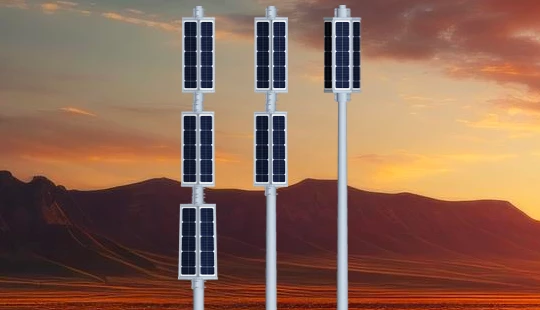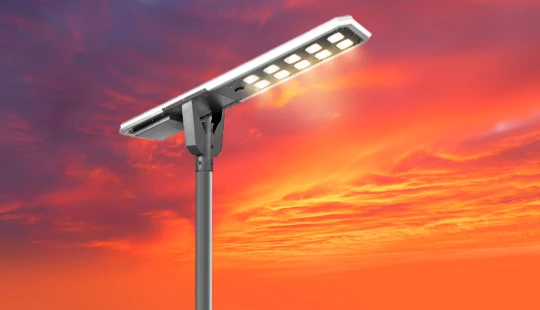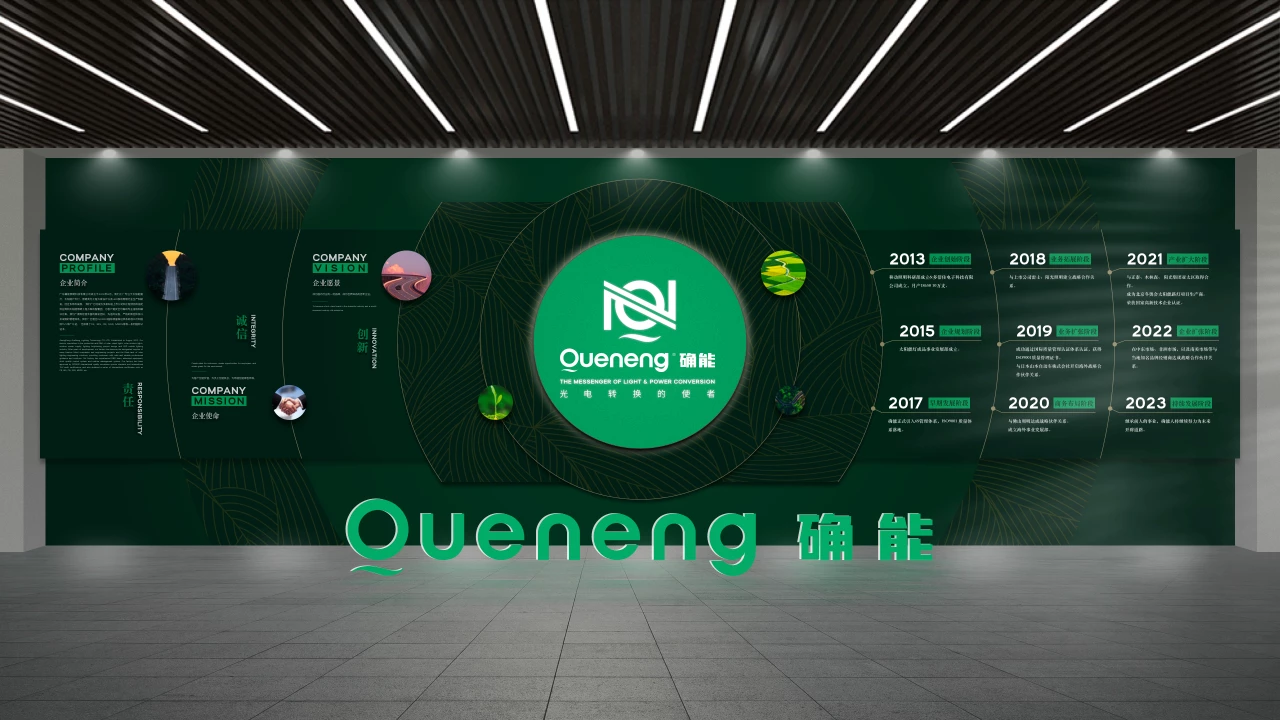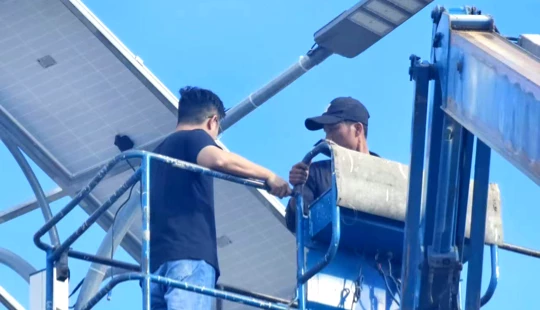best solar street lights for parks and gardens | Quenenglighting Expert Guide
Best Solar Street Lights for Parks & Gardens: Professional Buying Guide
As urban green spaces and public parks increasingly adopt sustainable lighting solutions, the demand for reliable, efficient, and aesthetically pleasing solar street lights has surged. For professionals involved in procurement or project management, a re-purchase decision goes beyond basic functionality. It's about optimizing performance, ensuring longevity, and maximizing return on investment. Here are the top 5 questions that professionals in the solar lighting industry should consider when selecting the best solar street lights for parks and gardens:
1. How to Ensure Year-Round Performance and Reliability, Even in Challenging Weather or Low-Light Conditions?
Consistent performance is paramount for public lighting. The key lies in the intelligent integration of high-quality components. Look for systems that feature:
- High-Efficiency Solar Panels: Monocrystalline silicon panels, with efficiencies typically ranging from 18% to 22%, convert more sunlight into electricity, ensuring better charging even on cloudy days. Proper panel sizing relative to the LED wattage and regional solar irradiance data (e.g., Peak Sun Hours - PSH) is critical.
- Advanced Charge Controllers: Maximum Power Point Tracking (MPPT) controllers are essential. They can boost charging efficiency by 15-30% compared to Pulse Width Modulation (PWM) controllers, especially in varying light conditions.
- Robust IP Ratings: For outdoor installations, an IP (Ingress Protection) rating of at least IP65 is necessary to protect against dust and water ingress, ensuring durability in diverse weather conditions (rain, snow, dust storms). Higher ratings like IP66 or IP67 offer even greater protection.
- Thermal Management: Efficient heat dissipation for both LEDs and batteries is crucial for their longevity. An aluminum alloy housing with good heat sink design prevents overheating.
2. What Advanced Features (e.g., Smart Controls, IoT Integration) Offer the Best Long-Term Value and Operational Efficiency for Public Spaces?
Modern solar street lights are no longer just 'on-off' devices. Smart features significantly enhance energy efficiency, operational control, and maintenance:
- Intelligent Dimming Profiles: Programmable dimming (e.g., 100% brightness for a few hours, then dimming to 30-50% for the rest of the night) significantly extends battery autonomy and conserves energy.
- PIR Motion Sensors: Passive Infrared sensors detect presence, increasing brightness when needed and dimming down when no activity is detected, saving substantial energy (up to 30-50%).
- IoT Connectivity (Remote Monitoring & Control): Systems with LoRaWAN, Zigbee, or 4G/GPRS connectivity allow for remote monitoring of battery status, panel performance, and LED functionality. This enables proactive maintenance, fault detection, and real-time adjustment of lighting schedules, drastically reducing operational costs.
- Adaptive Lighting: Some advanced systems can adapt light output based on ambient light levels or seasonal changes, further optimizing energy use.
3. What are the Critical Factors for Selecting the Optimal Battery Technology and Capacity for Solar Street Lights in Commercial Park Settings?
The battery is the heart of a solar light system, determining its autonomy and lifespan. For commercial applications, Lithium Iron Phosphate (LiFePO4) batteries are the industry standard due to their superior characteristics:
- Battery Chemistry: LiFePO4 batteries offer significantly longer cycle life (2,000 to 5,000+ cycles to 80% DoD) compared to traditional lead-acid or even other lithium-ion chemistries. They are also safer, more stable, and perform better in a wider temperature range (-20°C to 60°C).
- Capacity (Ah): Autonomy is key. Battery capacity should be sized to provide 3-5 nights of backup power without charging, accounting for periods of inclement weather. This calculation must factor in daily power consumption (LED wattage x hours) and system voltage.
- Battery Management System (BMS): A robust BMS protects the battery from overcharging, over-discharging, over-current, and extreme temperatures, prolonging its life and ensuring safety.
- Temperature Performance: For regions with extreme temperatures, look for batteries with excellent cold-weather performance and integrated heating elements if necessary.
4. How Do I Evaluate the True Long-Term Cost-Effectiveness (TCO) Beyond the Initial Purchase Price, Considering Maintenance and Lifespan?
While initial cost is a factor, professionals prioritize Total Cost of Ownership (TCO), which includes installation, maintenance, energy savings, and component replacement over the system's lifespan:
- Component Lifespan: High-quality LEDs can last 50,000-100,000 hours, LiFePO4 batteries 5-10 years, and solar panels 20-25 years. Lower-quality components will require earlier replacement, increasing TCO.
- Maintenance Requirements: Truly integrated, high-quality solar lights require minimal maintenance (e.g., occasional cleaning of solar panels). Remote monitoring drastically reduces the need for physical inspections.
- Warranty: A comprehensive warranty (e.g., 3-5 years for the entire system, 10-25 years for solar panels) indicates manufacturer confidence in product durability and protects your investment.
- Energy Savings & ROI: Solar lights eliminate electricity bills entirely, offering significant long-term savings. Calculate the Return on Investment (ROI) by comparing initial costs to projected energy savings and reduced maintenance.
- Installation Costs: Off-grid solar lights eliminate trenching, wiring, and grid connection fees, which can represent up to 30-50% of the total cost of traditional grid-tied lighting.
5. What Design and Light Distribution Considerations Are Paramount for Enhancing Safety, Aesthetics, and User Experience in Diverse Park and Garden Layouts?
Beyond illumination, solar street lights contribute significantly to the ambiance and safety of public spaces:
- Luminous Efficacy & Distribution: High-efficiency LEDs (e.g., 150-180 lumens per watt) are crucial. Optimal light distribution patterns (Type II, Type III, or Type IV optics) ensure even illumination without glare, avoiding dark spots and hot spots.
- Correlated Color Temperature (CCT): For parks and gardens, a warmer CCT (3000K-4000K) is generally preferred as it creates a more inviting and natural ambiance, enhances comfort, and reduces light pollution compared to harsher blue-rich light.
- Aesthetics & Integration: The design of the light fixture itself should complement the natural or urban landscape. Modern, sleek designs or more traditional styles are available to blend seamlessly with the environment.
- Glare Control: Well-designed optics should minimize upward light spill (reducing light pollution) and direct glare, ensuring comfortable visibility for visitors and preventing light trespass onto adjacent properties.
- Mounting Options: Consider various mounting heights and pole designs (straight pole, tapered pole, decorative arms) to suit different areas within parks (pathways, open areas, specific features).
Why Choose Quenenglighting for Your Next Solar Lighting Project?
Quenenglighting stands at the forefront of the solar lighting industry, offering solutions that meet the rigorous demands of professional procurement. We specialize in integrated solar street lights that embody the criteria discussed above:
- Unmatched Reliability: Utilizing high-efficiency monocrystalline panels, top-tier LiFePO4 batteries with advanced BMS, and MPPT controllers, Quenenglighting ensures consistent performance year-round, even in challenging climates.
- Smart & Sustainable Solutions: Our intelligent lighting systems feature advanced dimming, PIR motion sensing, and IoT compatibility, allowing for remote management, optimized energy consumption, and significant operational cost savings.
- High Quality Componentry: We source only the highest quality LEDs (e.g., Philips, Osram), robust aluminum alloys (IP65+), and durable components, ensuring a long lifespan and reduced maintenance burden.
- Customization & Design Expertise: Understanding that every park or garden is unique, Quenenglighting offers flexible design options, various CCTs (from 3000K to 5000K), and tailored light distribution patterns to perfectly blend aesthetics with functionality.
- Comprehensive Support: From pre-sales consultation and project planning to reliable after-sales support and warranties, Quenenglighting is committed to being a long-term partner in your sustainable lighting endeavors.
Investing in Quenenglighting means investing in future-proof, high-performance, and cost-effective solar lighting solutions that illuminate your public spaces brilliantly and sustainably.

Have more questions about our products or services?
The latest hot news you might like

Discover how solar panels power street lights, exploring the technology behind solar energy conversion, storage systems, and how solar-powered street lights are revolutionizing urban and rural lighting solutions.

Learn how AC Solar Hybrid Street Lights work, their advantages, disadvantages, system behavior in low-sunlight conditions, and why hybrid technology is ideal for regions with unstable sunlight.

Municipalities around the world are increasingly adopting solar-powered streetlights as part of their urban development strategies. Rising energy costs, the need for sustainable infrastructure, and government green initiatives are driving cities to switch from traditional street lighting to advanced LED solar streetlights.
Queneng Lighting provides municipalities with cost-effective, energy-efficient, and durable solar lighting solutions, ensuring safe and sustainable public spaces.
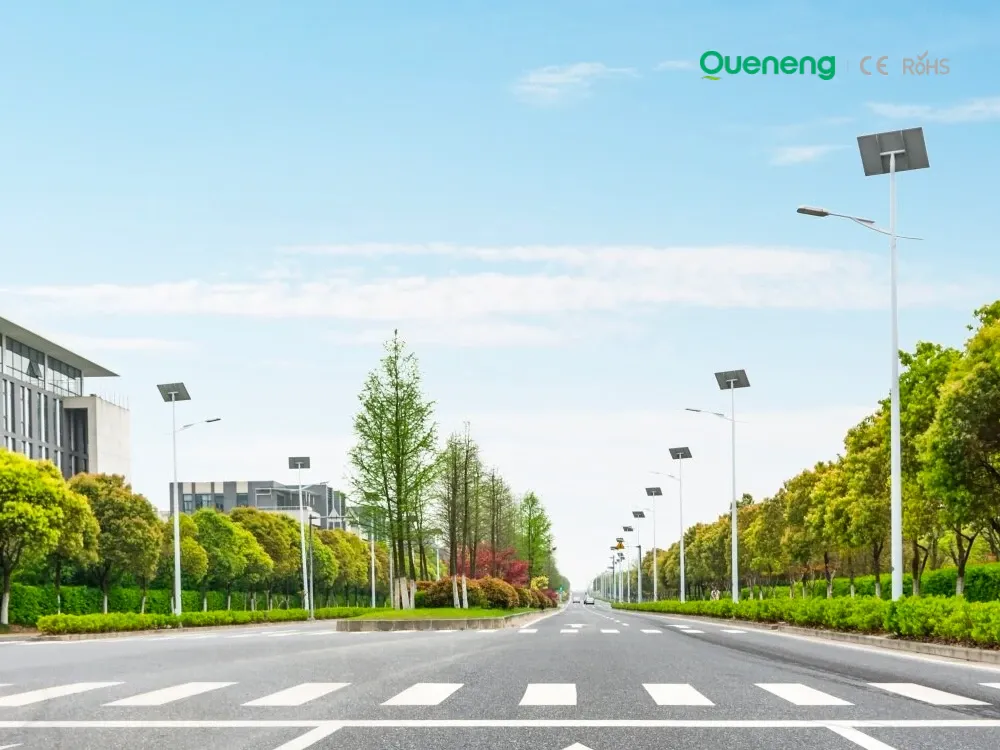
In recent years, the purchase of solar streetlights for municipalities has become a growing trend across the globe. Local governments are under pressure to reduce public expenditure, promote green energy, and create safer communities. Solar streetlights provide a reliable, cost-effective, and sustainable solution that meets these needs. Queneng Lighting, as a leading solar street lighting manufacturer, has supported multiple municipal projects worldwide with customized and energy-efficient solutions.
FAQ
Public Gardens and Landscape Lighting
How much sunlight do solar lights need to function properly?
Solar lights typically require 6-8 hours of direct sunlight during the day to charge fully and provide 8-12 hours of lighting during the night. However, our high-efficiency solar panels are designed to maximize energy capture even in less-than-ideal sunlight conditions.
Battery and Analysis
What are the control methods to prevent battery overcharging?
1) Peak voltage control: Determine the end of charging by detecting the peak voltage of the battery;
2) dT/dt control: determine the end point of charging by detecting the battery peak temperature change rate;
3) △T control: When the battery is fully charged, the difference between the temperature and the ambient temperature will reach the maximum;
4) -△V control: When the battery is fully charged and reaches a peak voltage, the voltage will drop by a certain value;
5) Timing control: Control the charging end point by setting a certain charging time. Generally, set the time required to charge 130% of the nominal capacity;
What conditions are best for batteries to be stored under?
Theoretically, there is always energy loss when a battery is stored. The inherent electrochemical structure of the battery determines that battery capacity will inevitably be lost, mainly due to self-discharge. Usually the size of self-discharge is related to the solubility of the cathode material in the electrolyte and its instability after heating (easy to self-decompose). Rechargeable batteries have a much higher self-discharge than primary batteries.
Distributors
Are there any minimum order requirements?
Yes, there are minimum order quantities depending on the product and region. However, we offer flexible solutions to help you meet the needs of your market. Contact us directly to discuss specific requirements for your region.
OEM&ODM
Can I get free samples before placing an order?
Free samples are available for serious OEM/ODM inquiries. Shipping charges may apply.
Schools and Educational Institutions
Do solar lights work year-round, even during winter?
Yes, solar lights can work year-round, even in winter. However, in areas with heavy snow, it’s important to ensure the solar panels are clear of snow for optimal performance.


Queneng's Luzhou Solar Street Light provides sustainable, energy-efficient outdoor LED lighting. Powered by solar energy, it's a cost-effective and eco-friendly solution for illuminating streets and pathways. A reliable and durable LED solar street light.

Illuminate your outdoor spaces with the Solar Street Light, a cutting-edge solution combining advanced solar technology and energy-saving LED lighting.

Queneng’s Solar Street Lights are designed to provide reliable, energy-efficient lighting for streets, parks, and other outdoor spaces.

Experience reliable outdoor illumination with our smart solar street light, a perfect combination of advanced technology and eco-conscious design.

Queneng's Luqiu Innovative Solar Street Light offers energy-saving, durable outdoor lighting. This solar power street light provides a reliable and eco-friendly solution for illuminating your streets and pathways.
If you would like more information about Queneng solar lighting solutions, please send us a message by filling out the form below. Our professional team will get back to you within 24 hours!
Rest assured that your privacy is important to us, and all information provided will be handled with the utmost confidentiality.
Schedule a Meeting

Book a date and time that is convenient for you and conduct the session in advance.
Have more questions about our products or services?

